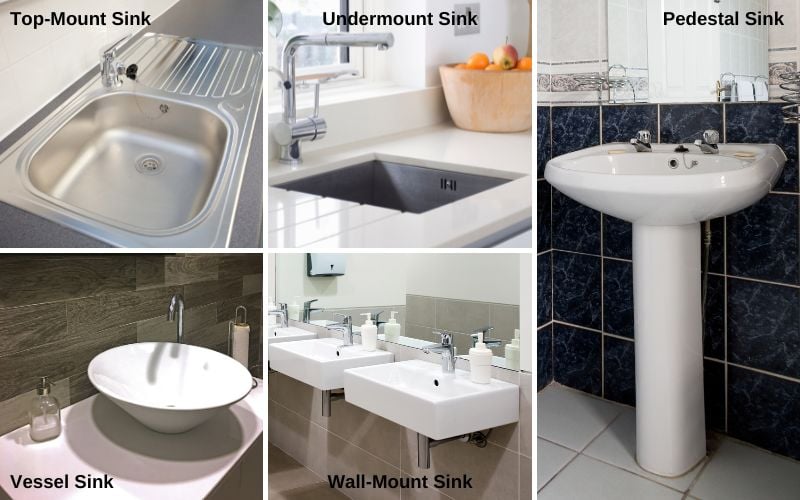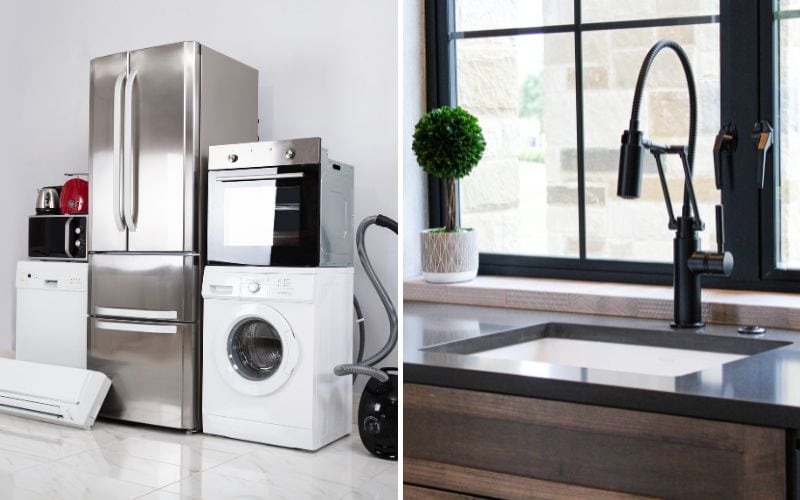When defining what an appliance is, there is often confusion about whether a sink is considered an appliance or not.
Some people believe a sink is just a fixture, while others argue it is indeed an appliance.
According to the definition, an appliance is a device or piece of equipment designed to perform a specific task.
Based on this definition, it can be argued that a sink is indeed an appliance, as it is designed to perform the specific task of providing a place to wash dishes, hands, and other items.

However, others argue that a sink is simply a fixture, as it is permanently attached to the plumbing and does not have any electrical or mechanical components.
Despite the ongoing debate, it is important to understand the difference between a plumbing fixture, a plumbing appliance, and a plumbing appurtenance to determine whether a sink falls under the category of an appliance or not.
Defining Appliances
When it comes to defining appliances, there are a few different factors to consider.
Generally speaking, an appliance is an electrical or mechanical device that is designed to perform a specific function within the home.
This can include anything from heating and cooling systems to kitchen appliances and laundry equipment.
In order to get a better understanding of what constitutes an appliance, it can be helpful to break them down into different categories.
Types of Appliances
There are several different types of appliances that can be found within the home. Some of the most common categories include:
- Kitchen Appliances: These are appliances that are typically used for cooking, cleaning, and food storage. Examples include refrigerators, ovens, microwaves, dishwashers, and garbage disposals.
- Laundry Appliances: These appliances are designed to make washing and drying clothes easier and more efficient. Examples include washing machines, dryers, and ironing boards.
- Heating and Cooling Appliances: These appliances are used to regulate the temperature within the home. Examples include air conditioners, heaters, and fans.
- Entertainment Appliances: These appliances are designed to provide entertainment within the home. Examples include televisions, sound systems, and gaming consoles.
While sinks are often considered to be a part of the kitchen, they are not typically classified as appliances.
This is because they do not have any mechanical or electrical components that allow them to perform a specific function.
Instead, they are simply a fixture that is used for washing dishes and preparing food.
Overall, it is important to remember that appliances are designed to make life easier and more convenient. Whether you are cooking a meal, doing laundry, or regulating the temperature within your home, appliances play a vital role in our daily lives.
Defining Sinks

A sink is a bowl-shaped plumbing fixture that is commonly used for washing hands, dishwashing, and other purposes.
It is typically connected to a drain and a water supply, and it may include a spray feature to be used for faster rinsing.
Sinks are commonly found in kitchens, bathrooms, and other areas where water is needed for cleaning or other purposes.
Types of Sinks
There are several different types of sinks that are commonly used in homes and other buildings. These include:
- Top-Mount Sink: Also known as a drop-in sink, this type of sink is installed from above and has a rim that sits on the countertop. It is easy to install and can be used with any countertop material.
- Undermount Sink: This type of sink is mounted underneath the countertop and has no rim. It is popular for its sleek and modern look, but it can be more difficult to install and may require professional installation.
- Wall-Mount Sink: This type of sink is mounted directly to the wall and does not require a countertop. It is commonly used in small bathrooms or other areas where space is limited.
- Pedestal Sink: This type of sink sits on a pedestal or column and does not require a countertop. It is popular for its classic and elegant look but may not provide as much storage space as other types of sinks.
- Vessel Sink: This type of sink sits on the countertop and is often used as a decorative element. It is available in a wide range of styles and materials, but it may require a special faucet and drain assembly.
Each type of sink has its own advantages and disadvantages, and the choice will depend on the specific needs and preferences of the user.
Some factors to consider when choosing a sink include the size of the room, the style of the room, the amount of storage space needed, and the budget.
Comparing Appliances and Sinks

Functionality
When it comes to functionality, appliances, and sinks serve different purposes.
Appliances, such as refrigerators, ovens, and dishwashers, are designed to perform specific tasks related to food preparation and storage.
Sinks, on the other hand, are primarily used for washing dishes, hands, and food items.
While appliances are essential for cooking and preserving food, sinks are necessary for maintaining cleanliness in the kitchen.
Installation
The installation process for appliances and sinks can vary greatly.
Appliances usually require professional installation, especially for built-in models like ovens and refrigerators.
Sinks, on the other hand, can be installed by a DIY enthusiast or a professional plumber.
However, the type of sink and the complexity of the installation will determine whether a professional is needed.
Undermount sinks, for example, require more work and expertise to install than drop-in sinks.
Maintenance
Both appliances and sinks require regular maintenance to ensure they function properly and last as long as possible.
Appliances may require more frequent maintenance, especially if they are used heavily or are older models. Sinks, on the other hand, are typically easier to maintain.
Stainless steel sinks, for example, can be cleaned with mild detergent and a soft cloth, while porcelain sinks may require more specialized cleaning products to avoid scratching or damaging the surface.
In conclusion, while sinks and appliances serve different purposes in the kitchen, they are both essential for maintaining a clean and functional space.
Understanding the differences in functionality, installation, and maintenance can help homeowners make informed decisions about which appliances and sinks to choose for their kitchens.
Conclusion
After considering the functionality, durability, and design of the sink, it can be concluded that a sink is indeed a kitchen appliance.
A sink is an essential component of any kitchen, as it provides a convenient way to clean and prepare food.
It is also a crucial element in maintaining hygiene in the kitchen.
While some may argue that the sink is not an appliance because it does not have any electrical components, it is important to note that the definition of an appliance has evolved over time.
According to Britannica.com, home appliances are “any of numerous and varied electric, electromechanical, or gas-powered devices introduced mainly in the 20th century to save labor and time in the household.”
Therefore, based on this definition, it is evident that a sink is an appliance, as it is a device that saves time and labor in the kitchen.
In addition, as noted by Yale Appliance, the sink’s insulation can affect its noise levels when in use, further solidifying its categorization as an appliance.
